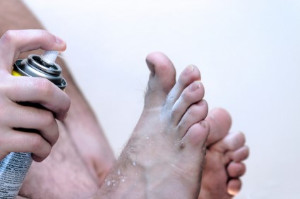Port Neches, TX (409) 727-1122
Various Types of Athlete’s Foot
Tuesday, 14 February 2023 00:00
The medical term for athlete’s foot is called tinea pedis. It is a skin infection of the foot, and it is considered to be contagious. Research has shown approximately 10 percent of Americans are afflicted with this condition, and it may recur in half the people who have athletes’ foot. The most common type of athletes’ foot is referred to as interdigital athlete’s foot, and it is found between the fourth and fifth toes. Many patients notice blisters form between the toes, and it may be an allergic reaction to certain types of fungal organisms. Moccasins-type athlete’s foot is noticeable on the sole and heel. This can cause the skin to become dry and flaky, and it may also affect the toenails. Effective preventative methods for athlete’s foot typically begin with practicing good hygiene habits and wearing appropriate shoes while in locker rooms and public swimming pool areas. Additionally, it is beneficial to refrain from sharing shoes, socks, and towels. If you notice symptoms of athletes’ foot, please confer with a podiatrist who can determine which type it is, and guide you toward the correct treatment.
Athlete’s foot is an inconvenient condition that can be easily reduced with the proper treatment. If you have any concerns about your feet and ankles, contact Pete O’Donald, DPM from Texas. Our doctor will treat your foot and ankle needs.
Athlete’s Foot: The Sole Story
Athlete's foot, also known as tinea pedis, can be an extremely contagious foot infection. It is commonly contracted in public changing areas and bathrooms, dormitory style living quarters, around locker rooms and public swimming pools, or anywhere your feet often come into contact with other people.
Solutions to Combat Athlete’s Foot
- Hydrate your feet by using lotion
- Exfoliate
- Buff off nails
- Use of anti-fungal products
- Examine your feet and visit your doctor if any suspicious blisters or cuts develop
Athlete’s foot can cause many irritating symptoms such as dry and flaking skin, itching, and redness. Some more severe symptoms can include bleeding and cracked skin, intense itching and burning, and even pain when walking. In the worst cases, Athlete’s foot can cause blistering as well. Speak to your podiatrist for a better understanding of the different causes of Athlete’s foot, as well as help in determining which treatment options are best for you.
If you have any questions please feel free to contact our office located in Nederland, TX . We offer the newest diagnostic and treatment technologies for all your foot and ankle needs.





